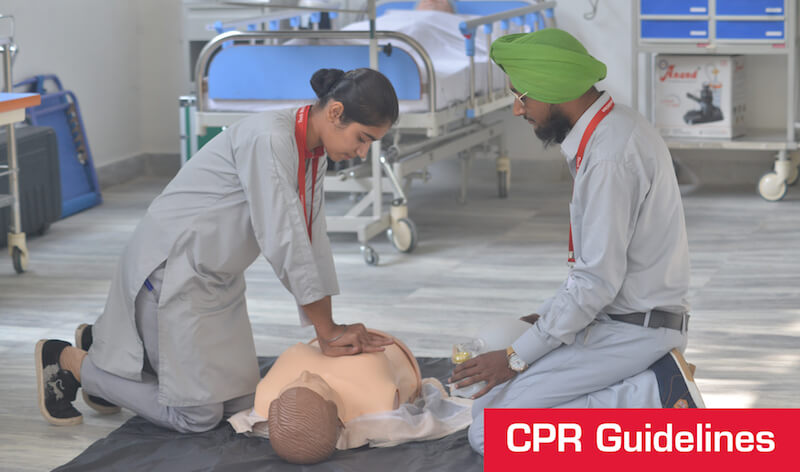Table of Contents
ToggleCardiopulmonary Resuscitation or CPR is one tongue-twisting term and a tricky procedure. It is one effective method that is often useful in case of a medical emergency. Many will use CPR as a pretext to introduce mouth-to-mouth breathing as seen in movies. In real life, CPR or Cardiopulmonary Resuscitation has much to offer. It is not only applied to save drowning victims but also performed on a person having a sudden cardiac arrest. In layman terms, a CPR can help to save a life during a cardiac or breathing emergency.
How to give CPR?
If you’re a paramedic student or aspiring to be one, then CPR is one of your important areas that you must have a good grip. Performing CPR during an emergency can be a challenge even for a trained person. Therefore, you must make sure to remember and administer Cardiopulmonary Resuscitation steps correctly.
Things to keep in mind before performing CPR –
- Approach the patient safely. Don’t take any unnecessary danger to yourself
- Check for the response by tapping the shoulders and asking loudly whether he or she is fine
- Ask someone to call the Ambulance
- Check for the presence of pulse in the neck for 5-10 seconds. Simultaneously, look for chest rise and fall
- If no pulse and breathing is found, start CPR (Cardiopulmonary Resuscitation)
A simple step-by-step guide for CPR –
| Steps | Actions |
| Step 1 | To perform CPR, keep your arms straight and cover the first hand with the heel of your other hand. Interlock the fingers of both hands together and keep them raised so that they do not touch the patient’s chest. |
| Step 2 | Lean forward and make sure that your shoulders are directly above the patient’s chest. |
| Step 3 | Press down on the chest about 2- 2.4 inches and release the pressure (let the chest come back up). |
| Step 4 | At the rate of 100-120 compressions per minute, give 30 compressions |
| Step 5 | Then tilt the head and lift the chin to open the airway and let the mouth fall open slightly. |
| Step 6 | Pinch the nose to shut it and take a normal breath and give mouth to mouth blow to the patient. Blow until you see the patient’s chest rise |
| Step 7 | Watch the patient’s chest fall and then repeat mouth to mouth breath again. Give a total of 2 breaths after 30 compressions. |
| Step 8 | Repeat the 30 chest compressions followed by two rescue breaths. Continue the cycle until the patient starts breathing again. |
At हेल्थकेयर के लिए टेक महिंद्रा स्मार्ट अकादमी, CPR is an integral part of the curriculum for every course. Under the guidance of expert faculties and on-the-job-training, paramedical trainees will learn the basics and importance of performing Cardiopulmonary Resuscitationduring emergencies.
How does CPR help?
You must know that CPR or Cardiopulmonary Resuscitation is an emergency procedure and is a combination of chest compressions and artificial ventilation. Whenever you perform CPR on a person who is in cardiac arrest, it will manually preserve intact brain function until further measures are taken to restore blood circulation and breathing.
There are three main steps performed in order to administer CPR–
- Chest Compressions
- Airway
- Breathing
Position for CPR
One of the important factorswhile administering CPR is the patient’s position. You must make sure that the patient’s position is as follow –
- The patient’s spine must be laying on a relatively hard surface, allowing effective compression over the sternum
- Performing a CPR while the patient is lying on a mattress will be less effective
- In order to achieve sufficient leverage to use the body weight to adequately compress the chest, you must be positioned high enough the patient
Follow the steps mentioned above and practice them on a dummy for a better understanding of the process.
Hope you are able to help someone during an emergency, if required. Also, comment and share the blog if you find it helpful.
Cheers to CPR, paramedical training and serving the society!


